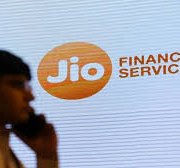There are various securities which are trading in the market one among them with safe and fixed return giving instrument is Debt instrument. In this blog we discuss more about debt instruments.
Meaning
Debt securities are financial instruments that represent a loan made by an investor to a borrower (typically a corporation or government). Unlike stocks, which provide ownership in a company, debt securities generate fixed interest payments over a specific period and return the principal at maturity.
Example: Stock Investment vs. Debt Securities
Let’s compare investing in stocks versus investing in debt securities using a real-world example from the Indian market.
Scenario 1: Stock Investment (Equity)
Suppose you invest ₹1,00,000 in shares of Tata Motors Ltd. If the stock price rises, your investment grows, and you may also receive dividends. However, if the stock price falls, you could lose money.
- Risk: High (depends on market conditions).
- Return: Uncertain but potentially high.
- Ownership: You own a portion of the company.
Scenario 2: Debt Securities (Corporate Bonds)
Instead of stocks, you invest ₹1,00,000 in a Reliance Industries Ltd. corporate bond with a 7% annual interest rate for five years.
Annual Interest Income = ₹1,00,000 × 7% = ₹7,000 per year.
Total Interest Over 5 Years = ₹7,000 × 5 = ₹35,000.
Principal Repayment: After five years, you get back ₹1,00,000.
Risk: Low (unless the company defaults).
Return: Fixed (predictable income).
Ownership: You are a lender, not an owner.

Examples of Debt Securities in India
Debt securities include financial instruments where an investor lends money to an entity (government or corporation) in exchange for fixed interest payments and principal repayment at maturity. Here are some key examples in the Indian market:
1. Government Securities (G-Secs)
Issued by the Government of India, these are among the safest debt instruments.
- Example: 10-Year Government Bond (7.18% GS 2033)
- Issued by the Reserve Bank of India (RBI).
- Fixed interest (coupon) paid semi-annually.
- Suitable for risk-averse investors.
2. Treasury Bills (T-Bills)
Short-term government securities with maturities of 91, 182, or 364 days.
- Example: 91-Day T-Bill
- Sold at a discount and redeemed at face value.
- No periodic interest—profit comes from the price difference.
3. Corporate Bonds
Issued by companies to raise funds, offering fixed interest payments.
- Example: Reliance Industries NCD (8% for 5 years)
- Higher returns than G-Secs but slightly riskier.
- Non-Convertible Debentures (NCDs) cannot be converted to equity.
4. Bank Fixed Deposits (FDs)
Not market-traded but considered a form of debt security.
- Example: State Bank of India (SBI) 5-Year FD (6.5%)
- Guaranteed interest income.
- Low risk, covered by Deposit Insurance.
5. Municipal Bonds
Issued by local government bodies for infrastructure projects.
- Example: Ahmedabad Municipal Bond (7.5% for 10 years)
- Used to fund city projects like roads and water supply.
6. Public Sector Bonds
Issued by government-owned corporations (PSUs).
- Example: Power Finance Corporation (PFC) Bonds (7.25%)
- Backed by the Indian government, offering stability.
7. Commercial Papers (CPs)
Short-term unsecured promissory notes issued by corporations.
- Example: HDFC Ltd. Commercial Paper (6.75% for 6 months)
- Used by companies for working capital needs.
Conclusion
- Stock investments offer high returns but come with higher risks.
- Debt securities provide stable, fixed income with lower risk.
In India, investors often balance both by holding stocks for growth and bonds for stability in their portfolios.
In the next blog we will discuss more on it…











Leave a Reply
Want to join the discussion?Feel free to contribute!